Image: A scene from New Delhi
Sukanya Verma in Mumbai
Sukanya Verma in Mumbai
In this series, we re-visit great Hindi film classics. Today, we look back at Kishore Kumar and Vyjayanthimala's 1956 film, New Delhi.
Some issues have a longer shelf life than they should. And so what was prevalent in 1956 continues to be a problem even today. For all our ostensible pride over India's celebrated diversity, a vast majority still squabbles over the differences nursing an inherent reservation for a community outside one's own.
Long before the prospect of an inter-community marriage between a Punjabi boy and Bengali girl faced its share of hiccups in Shoojit Sircar's Vicky Donor, Kishore Kumar discovered the ills of communal bonhomie far more strongly in Mohal Segal's deft satire and super hit rom-com, New Delhi.
It all starts at New Delhi railway station after Anand Khanna (Kishore Kumar) arrives in the Indian capital and gets into a taxi AND argument with Janaki Subramaniam (Vyjayanthimala). It's a familiar situation where two different passengers get inside cab at the same time and bicker over 'me first.'
The dispute ends with a flustered Anand forced to get down underscoring his somewhat secondary stature in an imminent relationship with the spunky Janaki.
Falling in love
Image: A scene from New DelhiThe second time they bump into each other, Anand's cycle inadvertently splashes some muddy water on Janaki's sari resulting in an amusing dirt-slandering match between the two.
This hostility marks an earlier chunk of their third encounter as well leaving Anand to tackle a bunch of cranky bystanders. (At some point, New Delhi seems to be subconsciously demonstrating, what those city-based surveys/ debates frequently suggest, with regards to the city's hotheaded, unfriendly reputation.)
Above circumstances compel him to take refuge in Kala Mandir, an art and dance academy, where Janaki teaches song and dance. Here, Anand steps aside and Kishore Kumar gets into his element to render a uproarious sampling of his deliberately dissonant voice attributed to, ahem, Ustaad Machchar Khan's training. It's as though Sunil Dutt referred to this Kishore Da clip to get the nuances right for his off-tune Bhole in Padosan starring the latter as his guru.
Of course, a Kishore Kumar caper cannot have him playing unmelodious so within seconds he charms an awe-struck 'Mala with the breezy Milte Hi Nazar Aap Mere Dil Mein Aa Gaye.
Needless to say, they don't fight ever again.
New Delhi looks at community-based groupism
Image: A scene from New DelhiBefore their romance sets in, Anand, a Jalandhar boy in Delhi to study radio engineering, struggles to find rental accommodation. At a Bangla-speaking residence, the son (Prabhu Dayal) is most hospitable but his unyielding father insists, 'Amhi komra dega toh kissi Bongoli bhai ko dega.'
His request is similarly dismissed by a Marwari party, 'Maaf karo bhai mhaare ko to Marwari kirayedar chahiye, mhaari jaatwaalo.'
And the tone and tradition of rejection continues with Sindhi, Marathi and Gujarati-speaking proprietors compelling Anand to masquerade as a South Indian (referred to as 'Madrasi' by everyone in the film in still politically-evolving times. But if you weren't offended by Mehmood's accent in Padosan, this won't hurt either) to find instant roof above his head.
Although it's a bit of a stretch to imagine a Punjabi lad would have this much trouble finding a landlord in a North Indian region, director Segal's priority, along with his co-writers Inder Raj Anand (father/grandfather of directors Tinnu/Siddharth Anand respectively) and Radhakrishan, is to look at the bigger picture.
Which is when Anand, if hails from the same state and shares the same mother tongue, he's eligible for preferential treatment and discounted lease. But if he's an 'outsider' he gets the boot. New Delhi looks at this community-based groupism in the most disparaging light.
Meet the Parents
Image: A scene from New DelhiThe rent issue works as a prelude to the main quandary. Being a Punjabi works to Anand's disadvantage yet again when he falls for the Tamilian Janaki.
To deal with a meet-the-parents kind of scenario, he brings in his bumbling domestic help (Dhumal) to pose as his father leading to ample hilarity, which has been reproduced in many films since.
There's, refreshingly enough, no melodrama when Janaki discovers his true identity but neither family approves.
While Janaki's otherwise doting dad (Nana Palsikar) is allergic to Punjabi people, Anand's father is a typically arrogant, authoritative but well-meaning Punjabi patriarch, one is accustomed to seeing on celluloid, be it New Delhi's Nasir Hussain or Dilwale Dulhania Le Jayenge's Amrish Puri.
Anand's sister Nikki (Jabeen Jalil), like her big brother, harbours romantic sentiments for a non-Punjabi, (the nice Bengali guy I mentioned in the beginning) sparking off a turning point in the story wherein now Janaki disguises herself as a Punjabi kudi. The idea is to teach both fathers a lesson in judging a person by his/her merits not caste, creed or community.
A cut above the rest
Image: A scene from New DelhiNew Delhi strives to make such conditioning appear thoroughly regressive and blasts its endorsers in the strongest words through writer Radhakrishan's character (he plays a small role of Vyjayanthimala's family friend).
The latter articulates this outlook rather pointedly when he remarks, 'Aapki aankhon se ek patti utri hai aur doosri chadh gayi. Pehle aap Punjabiyon ke siva sab pranth ke logon ko bura samajhte the. Aur aaj ek Punjabi ke wajah se sab Punjabiyon ko bura samajhne lage hain. Pranth ka label laga dene se koi acha bura nahi hota. Insaan acha bura hota hai apne salukh se, apne karmon se.'
New Delhi may be about a vivacious couple finding their happily-ever-after but the meaningful course (even if a tad simplified) Segal charts to realise it, makes it a cut above other films of this genre.
A Delhi tour
Image: A scene from New DelhiSet in New Delhi, K H Kapadia's cinematography offers ample views of its landmarks and monuments.
Whether it's the opening credits, which draw attention to its almost empty but grand-as-ever driving lanes across the majestic Rashtrapati Bhavan, Connaught Place, India Gate or scenes shot specifically inside Red Fort, Jantar Mantar or Boat Club or a fleeting view of Golcha cinema at Daryaganj, one can't help marveling at just how unbroken this imagery is.
Unlike Mumbai, there's very little advertising -- one-off posters of Cantharidine or Sapotex on local buses. Even after so many years, if you can overlook the traffic, the heart of Delhi looks just the same.
A spectacular Vyjayanthimala
Image: A scene from New DelhiKapadia's camerawork is as effective in capturing its leading lady's grace and radiance.
Vyjayanthimala, (styled by her grandmother Yadugiri Devi 'Yagamma') is spectacular here.
In terms of histrionics, it's not a demanding role but the 20-year-old actress (don't be fooled by her two braided pigtails) avoids the giggly heroine stereotype lending her Janaki a self-assured air and the guts to rebel for her cause with tact and talent.
Segal, a student of dance at Uday Shankar's academy, blends both its actors' greatest asset to produce some memorable numbers.
If Kishore Kumar yodels his way around a motionless 'Mala in the imaginatively picturised and performed Nakhrewali, the dancing sensation enthralls with her stunning elegance during a Bharatnatyam dance recital and agility (the ease with which she bends backwards, whoa) in the Bhangra extension to Tum Sang Preet Lagayi Rasiya.
Legendary entertainer, Kishore Kumar
Image: A scene from New DelhiKishore Kumar's Anand is a passive personality and in visible awe of his domineering father but shares a comfortable equation with the women in his life. Whether he's bantering with his sister or making shy advances at 'Mala, he shows a sense of humour but doesn't overpower any scene with the kind of boisterousness he demonstrated in films like Chalti Ka Naam Gaadi or Half Ticket.
Still, his co-star had a ball shooting with the legendary entertainer, who ribbed her incessantly in order to break her concentration during the filming of Nakhrewali. Their effervescent pairing worked well in films such as this, Ladki, Miss Mala and Aasha.
Arre Bhai Nikal Aa Ghar Se, Milte Hi Nazar, Tum Sang and the chartbuster Nakhrewali -- the soundtrack of New Delhi is simply delightful with Shankar-Jaikishen composing sweet-sounding tunes against Hasrat Jaipuri and Shaildenra's ingenious lyrics.
It is also interesting to note that the music accompanying the opening credits three years later went on to become a popular track -- Jaon Kahan Bataye Dil for the Balraj Sahni-Rehman starrer, Chhoti Behan.
Trivia
Image: A scene from New DelhiHere are a few more bits of trivia:
All those beautiful paintings displayed in Prabhu Dayal's room, who plays an artist in New Delhi, are originals by the well-known painter Harikishan Lal.
New Delhi marks the debut of Jabeen Jalil as Kishore Kumar's kid sister. Her other noteworthy role was competing with Bina Rai for Pradeep Kumar's affections in Taj Mahal.
She and Prabhu Dayal may not have its leads' charisma but their gentle courtship grows on the viewer eventually. Dayal went on to do small roles in Dev Anand starrers like CID, Kala Bazaar and Hum Dono.
Segal, later, gave break to stars like Rekha (in Sawan Bhadon) and Shatrughan Sinha (a cameo in Saajan).
Well known filmmaker J Omprakash (Aap Ki Kasam, Aasha, Aakhir Kyon?), also Hrithik Roshan's maternal grandfather, began his innings in the industry as the exploitation executive (responsible for selling a film's exploitation rights) of this film.
Fifty-six years later, New Delhi is still as topical as ever with upcoming films like Chennai Express and Two States addressing the complications of a north-south romantic equation.

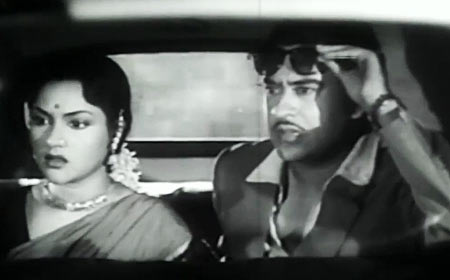
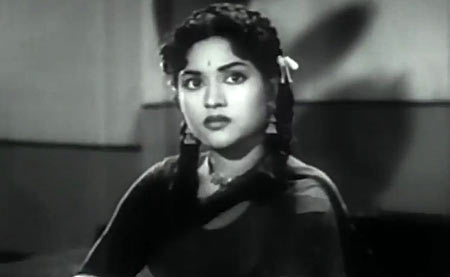
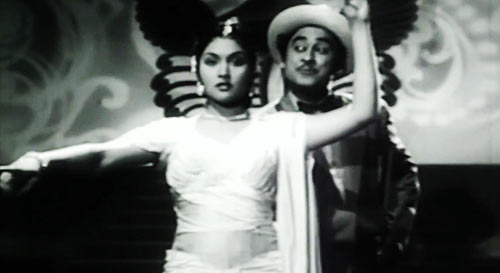
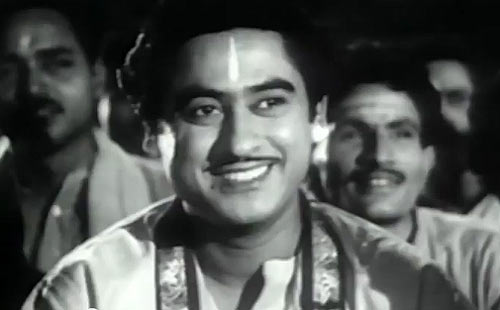
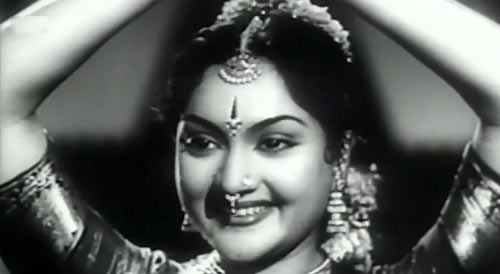
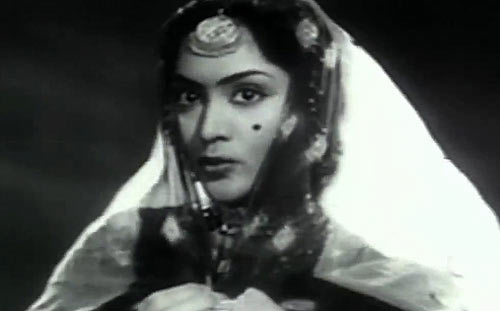
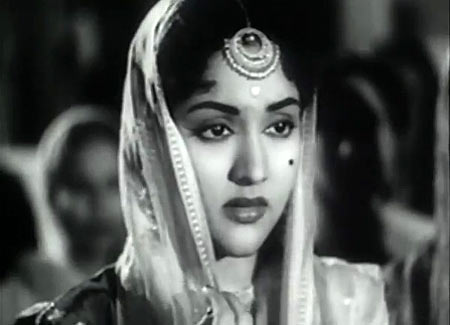
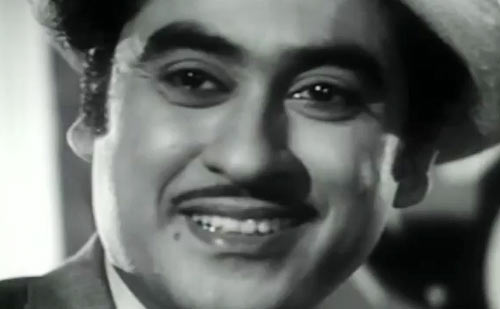
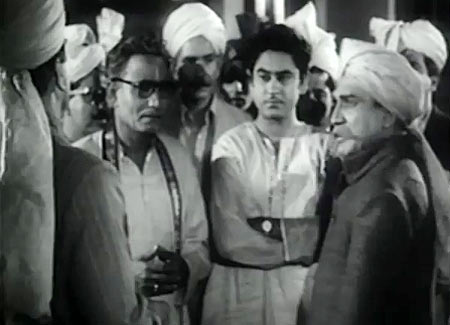
Comment
article